Light is power that does not end, but rather transforms from one form into another. To transform light into electricity, a device is required like a Solar panel; this is a device, which can transform sunlight into electricity. The astronomers call it “Sol”, what means the Sun. On the other hand, some scientists name it “Photovoltaics”, it means “light-electricity”.
[the_ad_placement id=”in-text-1-type-a”]In a solar panel, there is a collection of solar cells. These small sized solar cells are positioned all over the panel and the more light the panel gets, the more electricity it can produce.
What you should consider when buying a solar panel
When you have decided to buy a solar panel, the first question that comes up is what criteria or characteristics you should consider. This article will help you by suggesting some crucial points, which will help with your purchase.
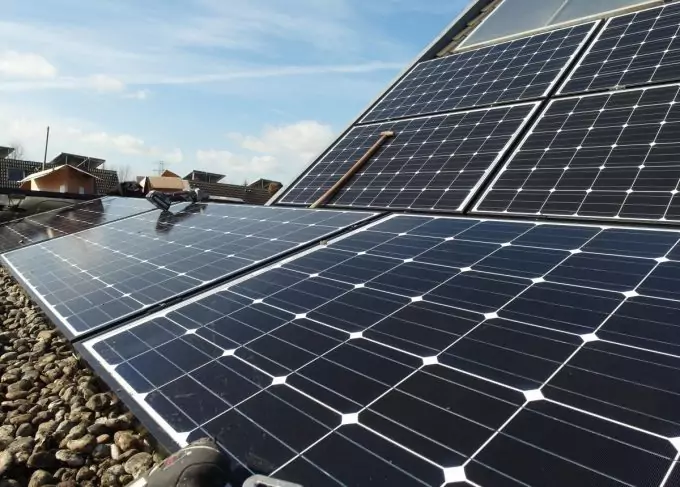
Cost: The cost of a solar panel depends on various factors such as its size in watt, its physical size, longevity, quality of the products and suitability with your purpose.
The three tiers of solar panel: In addition to cost, you should consider two other issues; these are the method of manufacturing and used material. There are three types of quality. These are:
- Tier one: In this tier, top 2% solar PV manufacturers are placed. These panels are vertically integrated, which means that every step of the manufacturing process is controlled. In addition to that, these companies invest huge amounts of money for the improvement of the product and use advance technology to produce solar panels. The silicon they use is of high quality and, as a result, their products are best in the market without a doubt.
- Tier two: This tier includes some of the good companies, who are producing comparatively better products in the market. They invest a certain amount of money to improve their products and are applying modern technology for some last few years. They also provide the product at a reasonable price.
- Tier three: It includes more than ninety percent solar panel manufacturers. One of their main tasks is to assemble the panels only; they do not produce any products and research on them to improve it. Their method of production is not modern and they can produce the products at cheaper rate.
Tolerance: The solar panel should have positive tolerance. The positive tolerance means a solar panel not only produces the amount of watt electricity mentioned on the package but also can produce more under standard situation.
Temperature efficiency: It is essential to determine, as it is needed to check whether temperature has any impact on the panel.
Longevity: Durability is important, because it shows whether you can trust the product of a particular company. Generally, the renowned companies give a warranty of 25-year.
Check out our article on how to choose the best solar panels for your guidance.
Choosing a type of solar panel
There are several types of solar panels in the market and you may get confused while choosing one for your purpose. This article will guide you to choose the types of solar panel you can use in your residence. These are:
- Monocrystalline
- Polycrystalline
- Thin film
At first, let’s know about what Crystalline Silicon is.
Crystalline Silicon (c-Si)
Among all the photovoltaics in this present world, more than 85 percent of them are made of silicon, though there are some varieties of this element. In a research conducted in 2011, more than 95 percent of all the shipments conducted by US producers to the residential areas were the solar panels made of crystalline silicon. This silicon may have several forms. The differences between these forms depend on the pureness of the silicon.
![]()
Now you can ask that: how it is possible to determine the pureness of silicon? Well, the scientists consider that, if the molecules of silicon are perfectly aligned, the silicone can be considered pure. The more perfect this alignment is, the better the cell of the solar panel can convert the solar energy or the sunlight into electricity.
See: How Do Solar Panels Work: Renewable Energy Explained for Everyone
However, it is noteworthy that, if you want to improve the purity you will need to pay some extra money. The crucial matter about this kind of panel is that, efficiency is not your prime concern. Rather, cost and space will be the two issues you will be later concerned about.
Mono-crystalline silicon solar cell
Also known as single-crystalline silicon, it is very easy to recognize. To identify, you will need to look at its external part. Try to find out whether the coloring is even and uniform. If it is so, then it indicates that, the solar panel has highly pure silicon.
![]()
The solar cells of this panel are generally made of silicon ingots, cylindrical in shape. To improve the performance of the panel and lower the cost, silicon wafers are made. For making silicon wafers, four sides of the cylindrical ingots are cut off. In consequence, monocrystalline solar panel gains its particular look.
[the_ad_placement id=”in-text-2-type-a”]You can differentiate between monocrystalline solar panel from poly crystalline solar panel by observing its outer look: the cells of polycrystalline solar panel are perfectly rectangular and do not have any round edges.
Benefits of using monocrystalline solar panel
There are several benefits of using monocrystalline solar panel. Some of them are mentioned as follows:
The monocrystalline solar panel has the highest efficiency rate. The reason behind this is that, it is made of silicon of highest grade. Its efficiency rate is very impressive (from 15 % to 20 %).
The most efficient solar panel in this category is made by SunPower and the name of their latest series is E20. This one is capable to converse up to 20.1 %. Another popular series is X-series. It has come to market in April 2013 and it has a record-breaking capability of converting sunlight: the percentage is 21.5. These are the panels that achieved the highest positive feedback from the users in the US market.

Image credit: bluebu.us
Space sufficiency is another crucial characteristic of this kind of Solar panel. The monocrystalline solar panel can provide highest power and it requires very less amount of area compared to other types of solar panels. This solar panel is capable of producing up to four times electricity compared to the solar panel on thin film.
The monocrystalline solar panel is also famous for its longevity. The producers were even able to give a twenty five year warranty on this kind of solar panel.
It provides better performance at the low light situations. For that reason, users considerably keep this monocrystalline solar panel ahead compared to other kinds of solar panels.
Disadvantages of using monocrystalline solar panel
However, there are some flaws in monocrystalline solar panel. Bellow we discuss some of them in detail.
High cost is one of the most common reasons, for which users general do not recommend buying a monocrystalline solar panel. For that reason, the consumers, who are concerned about the money, should consider polycrystalline silicon as suitable for their purpose. In some cases, they can also choose thin film to save their money.
Another trouble of using monocrystalline solar panel is that, if it is covered up with shade or snow then the whole circuit can become disabled. This can even take place if the monocrystalline solar panel is covered partially. If you consider that, even partial covering may be a problem for you; in that case, you can consider using micro inverters as an alternative to central string inverters. The micro inverters will assure that if a part of the monocrystalline solar panel is covered, then the whole panel will not be affected.

Image credit: ucsdnews.ucsd.edu
Waste of its significant portion of monocrystalline solar panel is another negative side of it. The name of the process used to produce monocrystalline silicon is the Czochralski process. Cylindrical ingots are produced in large quantity. However, as it was mentioned earlier, as part of making silicon wafers, four sides of the ingots are cut off. This is significant waste of the original silicon.
The monocrystalline solar panels are sensitive to temperature or weather. It works better in the warm weather. However, if the temperature goes up, it affects the performance of the monocrystalline solar panel. It is noteworthy that, most of the homeowners do not bother about the temperature.
Polycrystalline silicon solar cells
In 1981, for the first time, a solar panel based on Polycrystalline silicon was marketed. It is also known as Polysilicon (p-Sci) and multi-crystalline silicon (mc-Si). It is noteworthy that, this kind of solar cell does not need any Czochralski process. For these solar cells, square wafers are used.
![]()
The process of making square wafers is very simple. Silicon in raw form is taken at first, then it is melted and later poured in a square sized mould. After cooling this, the whole material is cut into square shape. Square wafers are made in this way.
Benefits of using Polycrystalline silicon solar panel
You will find several benefits of using polycrystalline silicon solar panel. Some of them are mentioned bellow:
- The process of making polycrystalline silicon is very simple and cheaper. In addition to that, the silicon waste is less than with the monocrystalline silicon solar panel.
- The performance of polycrystalline Silicon Solar Panel can be affected by temperature. In addition to that, its tolerance of heat is lower than monocrystalline silicon solar panel. It can be severe as it can lower the performance of the panels. Moreover, heat can even shorten the lifespan of the solar panel. However, most of the time it is not the main concern of the consumers, as the effect in many cases turns out to be minor.
Disadvantages of using Polycrystalline Silicon solar panel
However, there are several drawbacks of using polycrystalline silicon solar panel. Some of the crucial disadvantages are as follows:
- Lower efficiency is one of the main disadvantages of using this type of solar panel. The percentage of efficiency is 13% to 16%. The reason behind this lower efficiency is the lower leveled purity of the silicon. Apparently, it is not as efficient as the monocrystalline solar panels.
- It is not space efficient as well. It is required a large amount of area to provide the same amount of electrical power produced by the monocrystalline solar panel. It is noteworthy that, it does not signify that the performance of all monocrystalline solar panels is better than polycrystalline solar panels.
- Some consumers have complains about the appearance of the polycrystalline solar panel. According to their opinion, polycrystalline solar panel is less aesthetically pleasing as their look is less uniform, and its color is speckled blue.
String Ribbon solar cells
Polycrystalline silicon is also used to make another kind of solar cells. Its name is String Ribbon Solar cells. The name of this type of solar cells is derived from the name of the manufacturing technology – String Ribbon Solar cells. The silicon ribbons used here are very thin and the process of making it is very straightforward. Through the molten silicon, temperature resilient wires are dragged. However, this type of solar panel has similar appearance with the traditional types of polycrystalline solar panels.
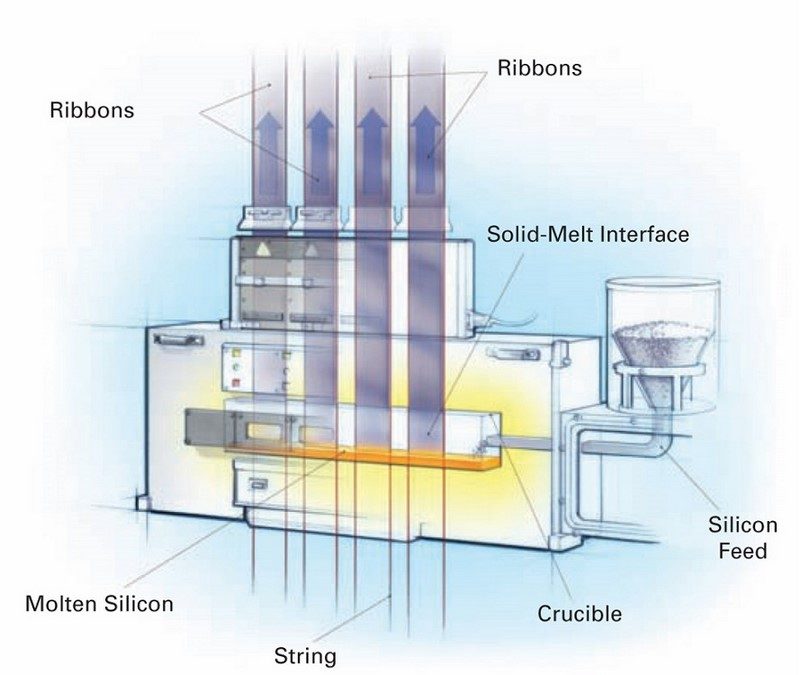
The alarming fact is that, the manufacturer company of this solar panel, Evergreen Solar, has now become bankrupt. In consequence, it is now unclear what would be the future of the String Ribbon technology.
Benefits of using String Ribbon solar panel
As String Ribbon Solar Panel is made of Polycrystalline silicon, you will have the same benefits of it as discussed above. However, the most positive side of this solar panel is that, it utilizes only the half amount of the silicon used to produce monocrystalline. As a result, the cost is lower.
Disadvantages of using String Ribbon solar panel
It is possible to face one of the following problems if you are interested to use String Ribbon Solar Panel:
- The method of producing string ribbon solar panel is every expensive. In addition to that, it is very energy extensive;
- The efficiency of the low ended polycrystalline solar panels is approximately 13 to 14%. However, the scientists have improved the efficiency of string ribbon solar panel and pushed it as close to 18.3%;
- The string ribbon solar panel is not space efficient as well. Considerably, it has the lowest space efficiency among the solar panels made of crystalline silicon.
Thin-Film solar cells (TFSC)
Another name of thin-film solar cell is thin-film photovoltaic cells or TFPV. The method of manufacturing this thin-film solar cell is quite different. The gist form of this process is that, various layers of photovoltaic material are deposited onto one layer.
There can be various types of thin film solar cells that can be categorized according to the photovoltaic material, which has been deposited on one layer. These are:
- Amorphous silicon, or a-Si
- Copper Indium gallium selenide, it is also named CIS/CIGS
- Organic photovoltaic, alternatively OPC
- Cadmium telluride, or CdTe
It is noteworthy that, except for Organic Photovoltaic (OPC), the rest of the products are commercially available on the market.
There are several technologies, which are used to produce thin-film solar cells and the efficiency of these solar cells depends on these technologies. Normally, the efficiency of these solar panels is approximately 7% to 13%. Besides that, the production modules run at almost 9%. Scientists are trying to improve its efficiency and they are expecting that, in near future, it will be possible to increase the percentage to the almost 10 to 16%.
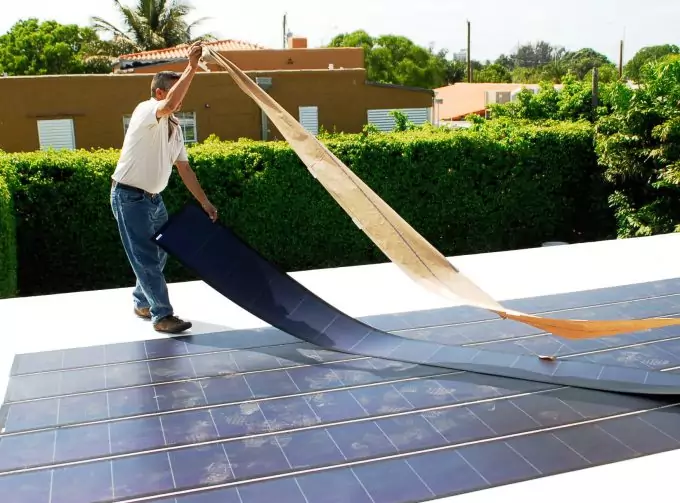
Interestingly, the market of the thin-film photovoltaic has grown up to 60% per year from the year of 2002 to 2007. From a research conducted on 2011, it has been found that, approximately 5% of the photovoltaic module (made in US), which have been made shipment to various residential areas, are made of thin-film.
Advantages of thin-film solar cells
- The best characteristic of thin-film solar cells is that, it is possible to produce energy in large quantities. As a result, it is possible make them at cheaper rate than other kinds of solar cells which are based on crystalline.
- Their look is very appealing too. The basic reason is that, their appearance is homogenous.
- Flexibility is another crucial benefit. As it is flexible, it is possible to have several potential and effective application of it.
- It can work in high temperature. It makes it more efficient comparing to other kinds of solar panels.
- It also works in shade of dirt and snow. Shade cannot affect its performance.
- If space is not your concern, then thin-film solar panel suits your purpose. This is because it requires huge area to be workable.
Disadvantages of thin-film solar cells
However, there are several negative sides of using thin-film solar cells. Some of the important disadvantages are:
- Most problematic side of thin-film solar cell is that, it is not suitable for the residential purpose. Although it is very cheap, it is not suitable for a house as it requires a large area. The monocrystalline solar panel, made by SunPower company, produces almost four times the quantity of electricity comparing to the thin-film solar panel for the same covered area.
- As it takes a huge area, it will be needed extra cost to buy the PV equipment, such as structures to support and the cables for connection.
- This type of solar panel normally damage quickly comparing to other types. For that reason, companies tend to give a shorter warranty with this product.
Some popular solar panels to buy online
There are various kinds of solar panels that you can find online. However, the products given below are considered as best by the users.
Renogy 100W Mono starter kit
The particular reasons you can choose this product is that, it is very easy to use, it has an excellent appearance and can be used for several purposes (indoor and outdoor). It comes with an excellent charge controller, PWM 30A, and, in addition to that, it comes with a unique designed bracket, namely Z bracket.
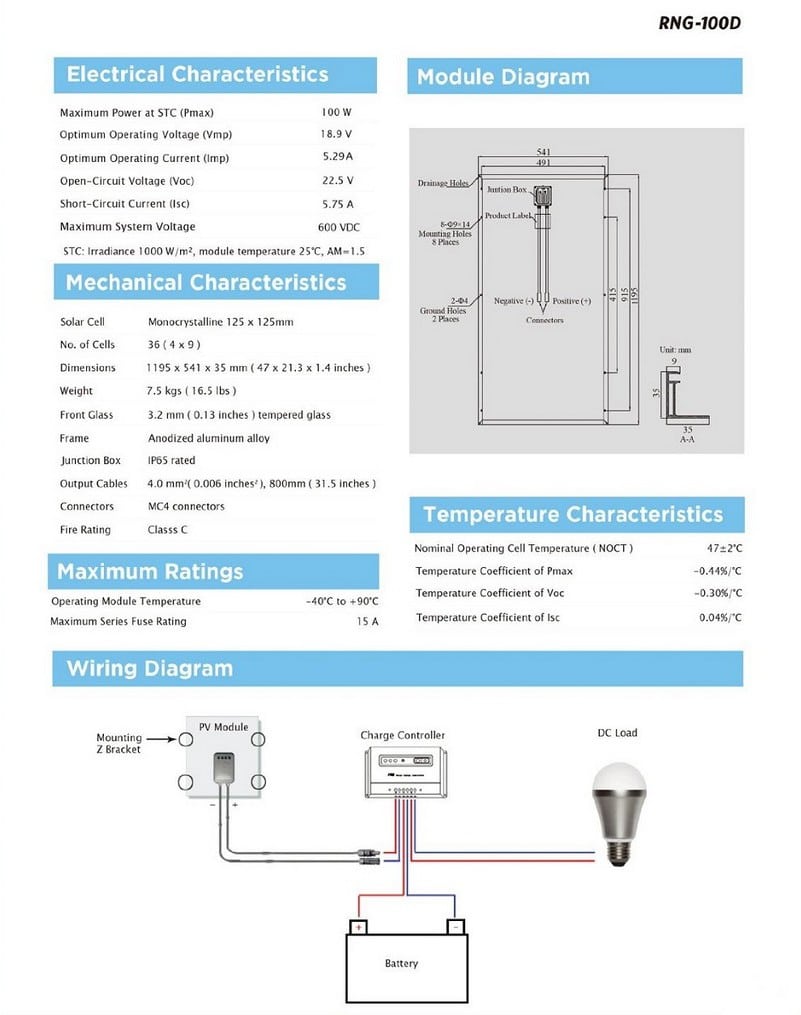
You will get a pair of twenty feet adaptor (MC4 Adaptor). The ideal output is 500 watt hours every day and it is capable to charge a battery (a 50Ah battery) within three hours (depends on availability of sunlight). The company provides a 25-year warranty.
[the_ad_placement id=”in-text-3-type-a”]If you like this product you can find and buy it on Amazon.
Renogy 100W Monocrystalline bendable solar panel
There are several notable features of this product and one of them is its plastic back sheet that can be curved up to 30 degree. It is possible to use this panel on various surfaces including a tent, a cabin and/or a boat. You can even use it in crowded places or tight areas and it is perfect for non-permanent purposes. The holes on the panel are drilled so you can mount and secure it very quickly.
Besides these, you will be given a junction box that is sealed and waterproof. It will come with a pair of cables (ten inches) – MC4 connectors are also available with it. Its price is reasonable as you can buy it at $230.
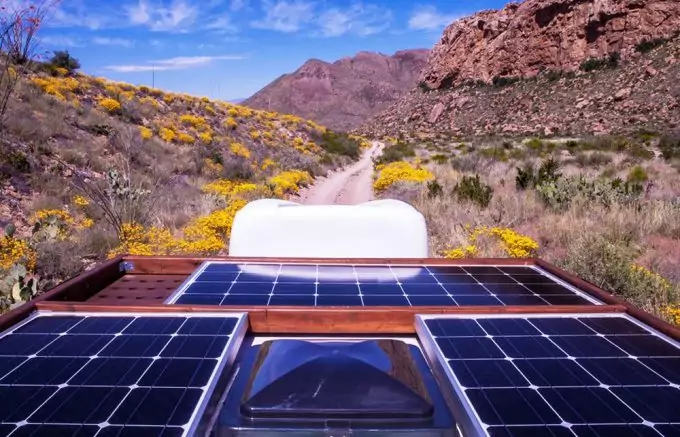
If you like this product you can find and check its price on Amazon.
Now, you are aware of the basic characteristics that you need to know on a solar panel. It is time to visit a store and buy a suitable solar panel for your particular purpose. You can also ask for help and advice from your neighbors or friends and family, who already use solar panels. Some further practical experience doesn’t hurt and it will make you more confident while buying a solar panel.
To find out how to install solar panels, see our article on this important topic.


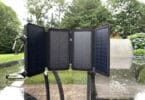



I think anyone who is considering converting to solar energy should read this article before deciding what type they want. Many people neglect to do their homework (I’m one of them) and the result is not favorable by any means. I wasted money and effort before making the right choice.
It’s always good to search for top-notch online sources, and we offer you the best information as far as the best solar panels are concerned.
interesting article!
Is it more important to save up on Watts per square meter or ignore space and use whatever is the most efficient at producing electricity?
I like the idea of solar energy but never dabbled in it. I am sure this article will change my perception of solar energy.
Thank you James for sharing your opinion with us.